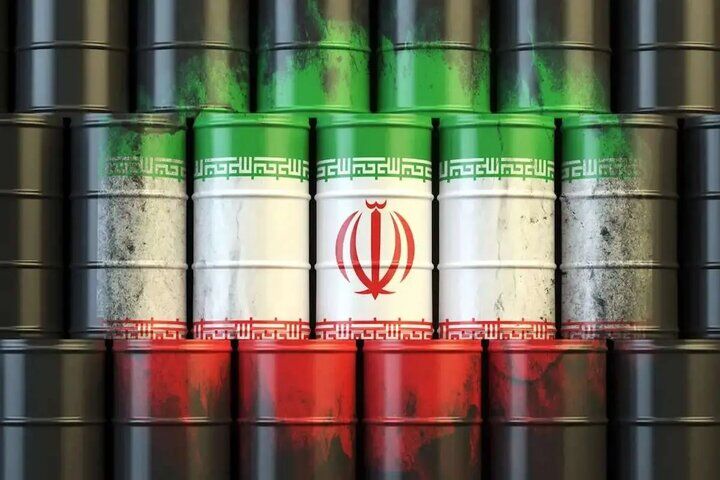Oil prices have always been a critical variable in Iran’s economy, as revenue from crude exports continues to be one of the country’s most important sources of budget financing. Additionally, Iran’s oil industry, as the engine of the national economy, sustains over 70 different industries, and oil prices directly or indirectly impact other economic activities. For this reason, forecasting and monitoring Iran’s oil price fluctuations are of great importance.
This report examines the trends in Iran’s oil price fluctuations over the past year and answers the question: What factors caused the price of Iran’s heavy crude oil to fluctuate between $67 and $87 in 1403?
An $87 start for Iran’s oil
Data shows that on the first day of 1403 (March 20, 2024), each barrel of Iran’s heavy crude traded at $81.60, a 17% increase compared to the same period the previous year. Just 17 days into the year, Iran’s heavy crude reached its annual peak at $87.71 per barrel.
The main reasons for this price surge were:
- Increased oil supply threats due to Ukraine’s drone attacks on Russian refineries
- Escalating Middle East tensions following Israel’s strike on Iran’s consular building in Syria
However, after Iran’s retaliatory Operation True Promise (April 15, 2024) and Israel’s lack of response, tensions temporarily subsided, pulling Iran’s heavy crude below $80. By late May, due to OPEC+ members easing voluntary supply cuts and rising US oil inventories, prices dropped further to $76.
Rebound amid supply concerns
The downward trend did not last. In early summer, concerns over:
- Supply disruptions from Hurricane Beryl
- Potential escalation of Middle East geopolitical tensions
pushed Iran’s heavy crude back up, reaching over $87 by mid-July—mirroring OPEC’s basket prices. At this time, North Sea Brent crude traded at similar levels.
Did Israel’s provocations affect Iran’s oil prices?
While Israel’s aggressive actions in mid-1403 (assassinations in Tehran and Lebanon) caused short-term price fluctuations (~3%), Iran’s heavy crude largely followed global trends, dropping into the $70 range due to:
- Eased concerns over Mexico Gulf Coast production
- Signs of weakening Chinese demand
- Fears of a US economic recession
By late summer, weak Chinese demand drove Iran’s heavy crude to its lowest 1403 price: $67 per barrel on September 11. This prompted OPEC+ to delay a planned 180,000 bpd production increase to prevent further price drops.
Geopolitics push prices up again
Early autumn saw renewed price increases after:
- The assassination of Hezbollah’s leader
- Iran’s Operation True Promise 2
- Israeli threats to target Iranian oil facilities
Prices jumped from ~$68 to over $76 per barrel before stabilizing as tensions eased.
Minimal impact from Trump’s election win
Despite Donald Trump’s hostile stance on Iranian oil exports and history of sanctions, his November 2024 US election victory had little immediate impact. Iran’s heavy crude remained between $69 and $73 per barrel.
OPEC+ delays production increase
In mid-December, OPEC+ ministers postponed a 2.2 million bpd production increase from January to April 2025, opting for a gradual return to full production by September 2026. This signaled tighter future supply.
Winter price fluctuation
Early winter saw prices rise due to:
- OPEC+ delaying production hikes
- Tighter US oil sanctions on Russia
By January 21, 2025, Iran’s heavy crude hit $78.80 per barrel. However, prices later fell to $72 due to:
- Trump pressuring OPEC to lower prices (as a condition for Ukraine-Russia peace talks)
- Potential US-China-Europe trade war fears
Year-end drop
In the final month of 1403, prices declined again due to:
- Concerns over US import tariffs harming global growth
- OPEC+’s gradual production adjustments
- Speculation over lifted US sanctions on Russia
As a result, Iran’s heavy crude fluctuated between $68 and $70 in February 2025.
Key takeaways
- Geopolitical events caused short-term swings, but supply and demand dictated long-term trends.
- US sanctions narrowed the gap between Brent and Iranian crude prices, even reversing them at times.
- Major domestic events (e.g., Iran’s presidential election, President Raisi’s death) had no significant price impact.
The Shana News Agency reported that while political and geopolitical factors influence short-term volatility, market fundamentals ultimately shape oil prices. Given oil’s critical role in Iran’s economy, policymakers must continuously monitor these factors.


Your Comment